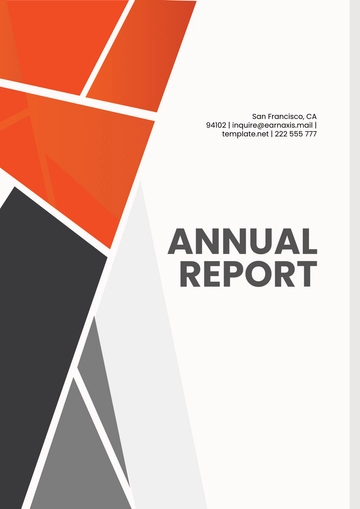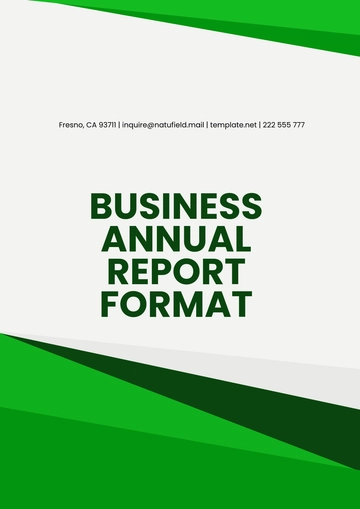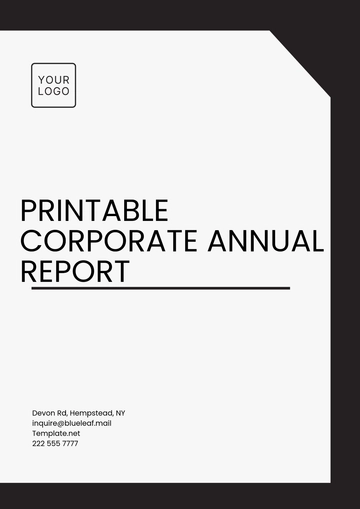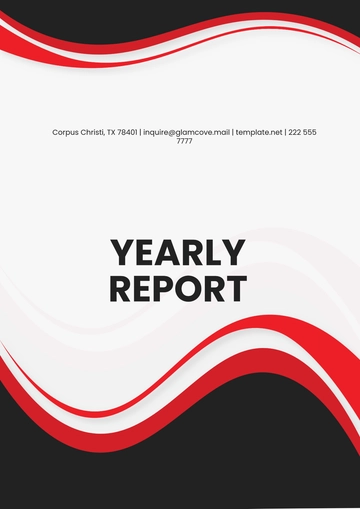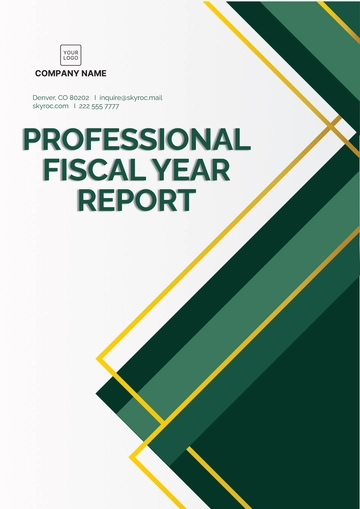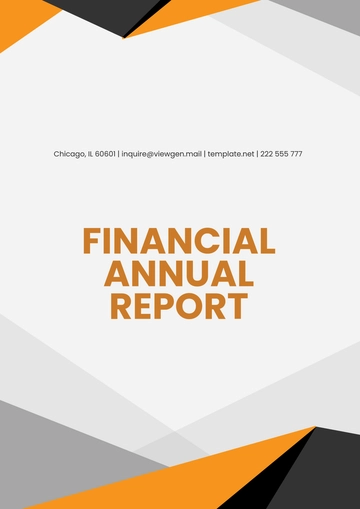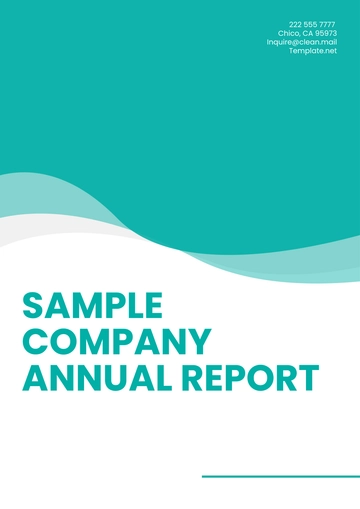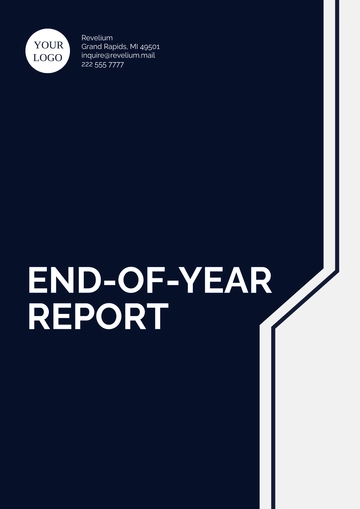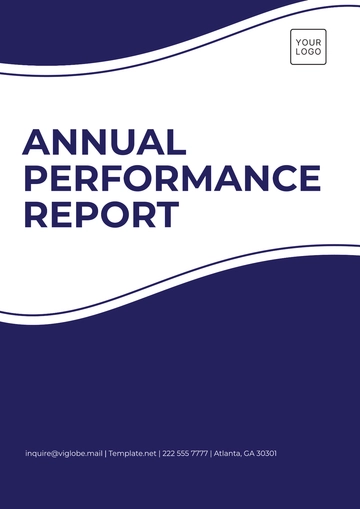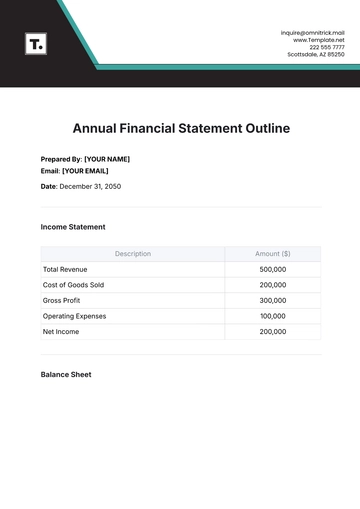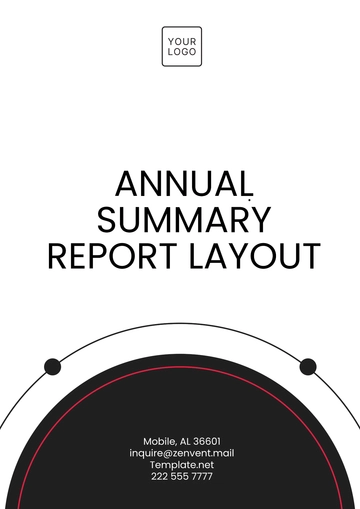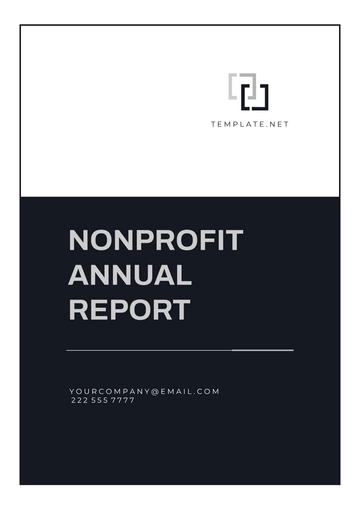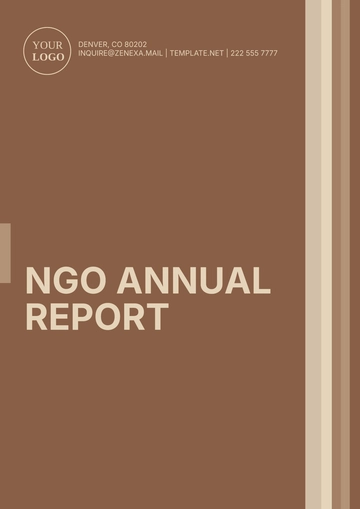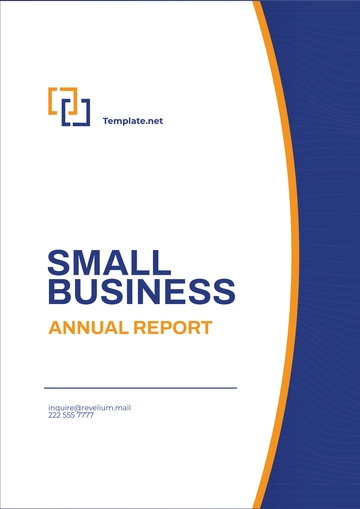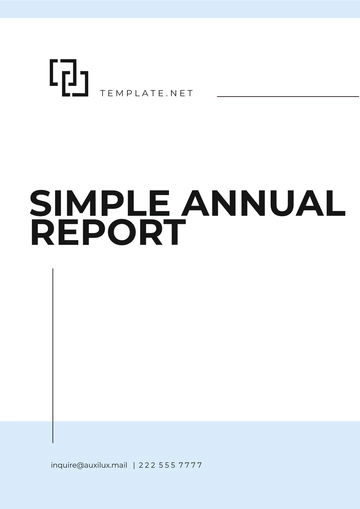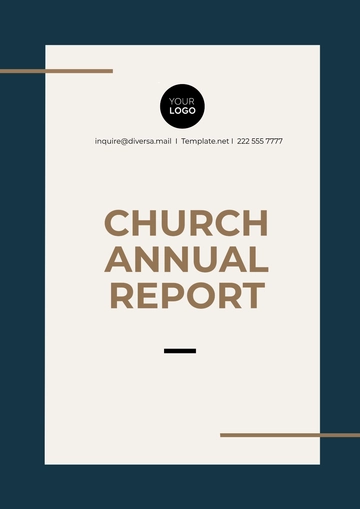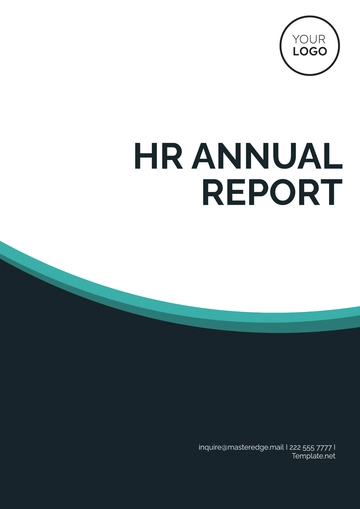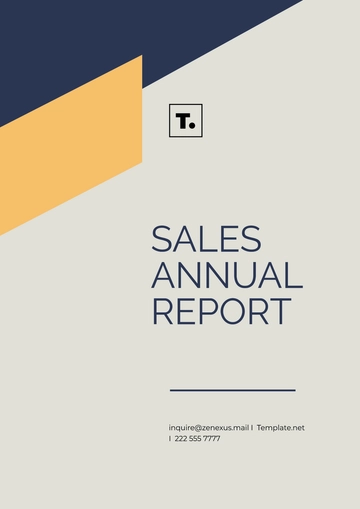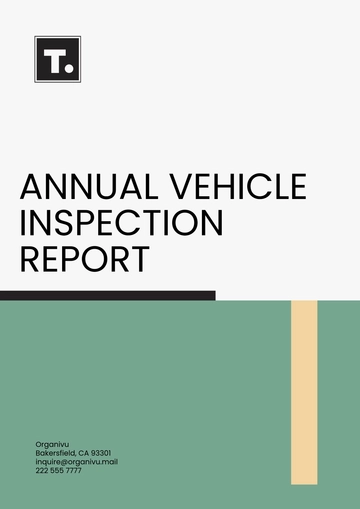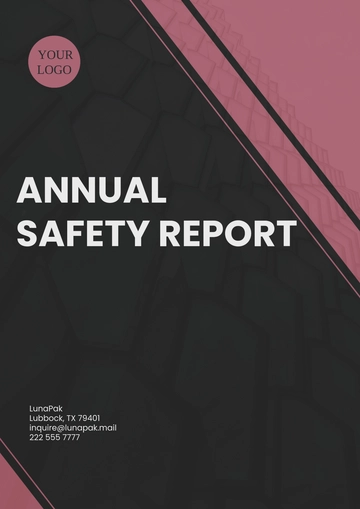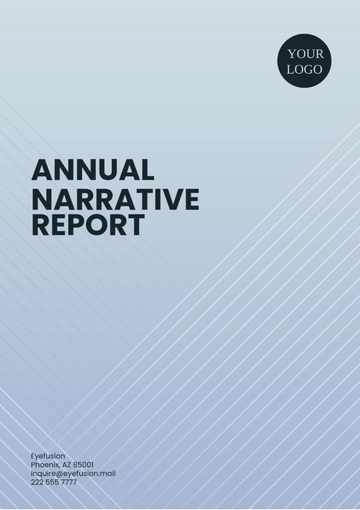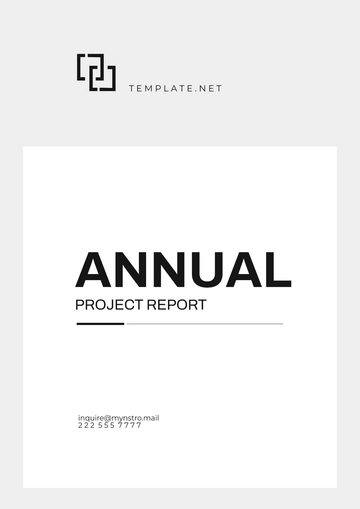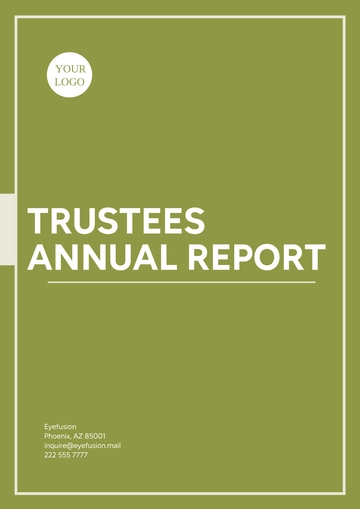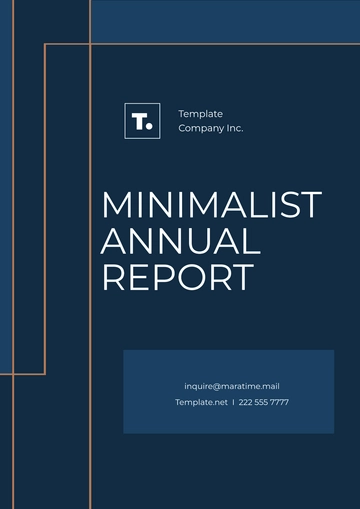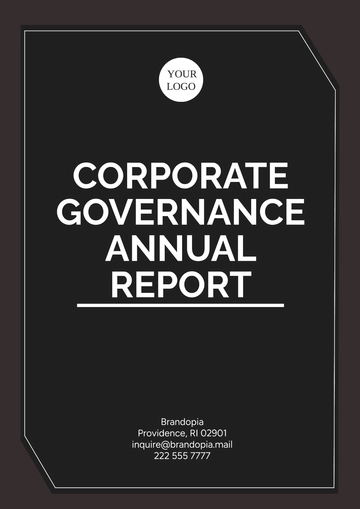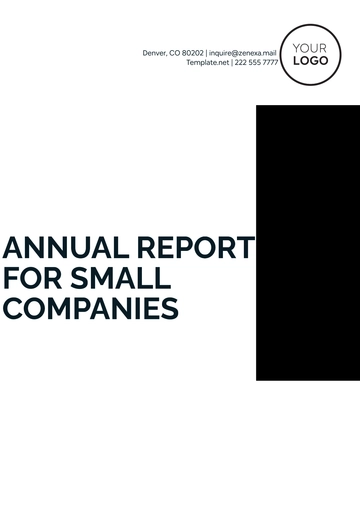Free Annual Legal Department Report
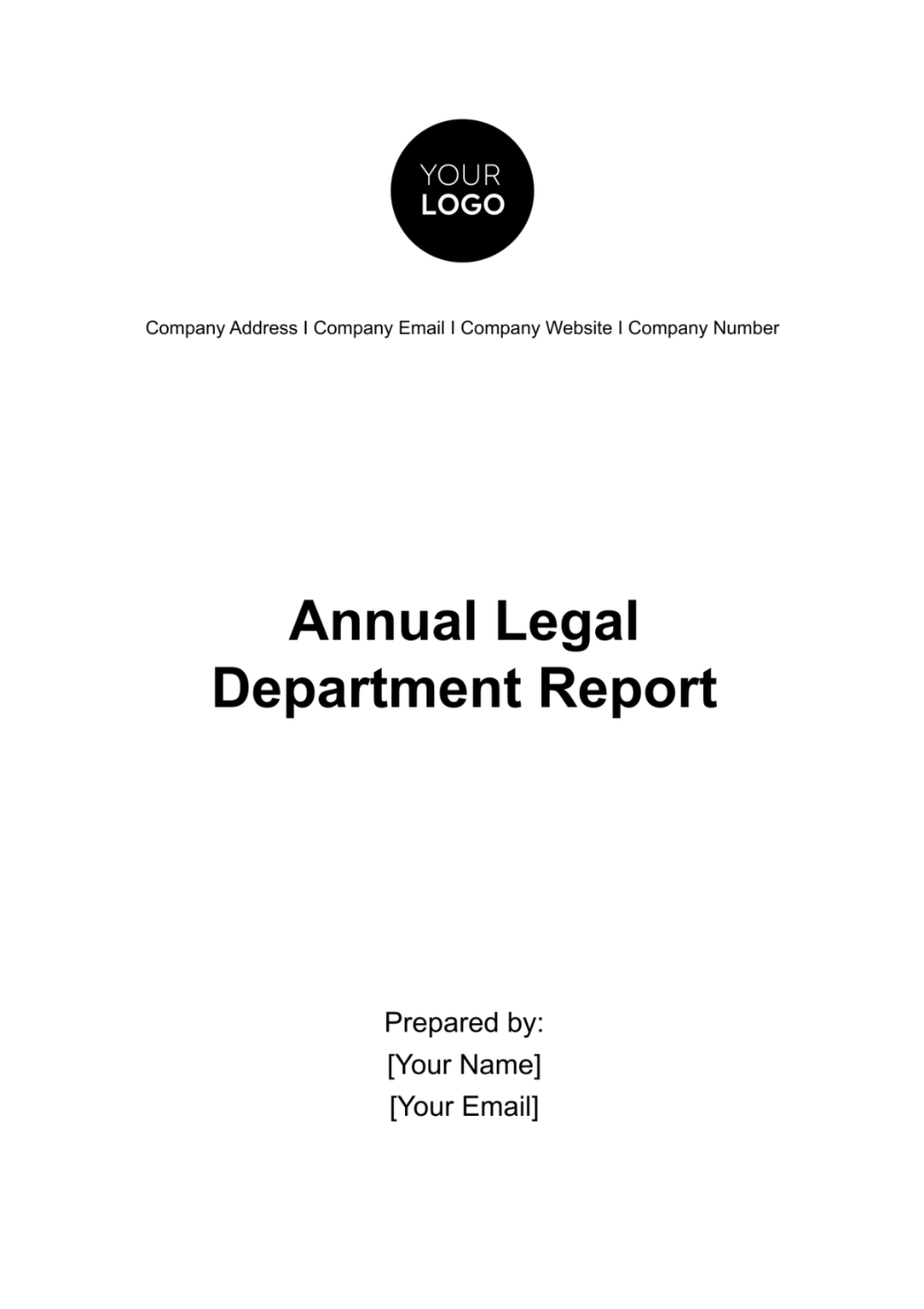
Executive Summary
This report offers a comprehensive overview of the legal department's activities and achievements during the fiscal year [Date]. It assesses various facets of our operations, including case management, legal expenditure, intellectual property (IP) protection, and regulatory compliance. Through our collective efforts, we have added significant value to [Your Company Name] while effectively mitigating legal risks.
Case Management
The table below presents a breakdown of the legal cases managed by the department during the fiscal year [Date], categorized by type and their respective statuses. This overview aims to provide insights into the department's efficiency in handling legal matters and resolving them in a timely manner.
Case Type | Number of Cases | Status |
|---|---|---|
Contract Disputes | 12 | Closed |
Intellectual Property | 7 | Open |
Compliance Issues | 24 | Open |
Employee Litigation | 4 | Closed |
Others | 15 | Closed |
Our case management summary underscores the department's efficiency in resolving legal matters. Notably, a substantial proportion of cases have been successfully closed, indicating our proactive approach and adept handling of legal challenges.
1. Contract Disputes (Closed):
The resolution of 12 contract disputes within the fiscal year reflects our department's effectiveness in negotiating, mediating, and resolving conflicts efficiently. By closing these cases, we have minimized legal exposure and upheld contractual obligations, contributing to [Your Company Name]'s reputation for reliability and professionalism.
2. Intellectual Property (Open):
The management of seven ongoing intellectual property cases underscores the importance of safeguarding [Your Company Name]'s innovative assets. Despite their ongoing status, our team remains vigilant in protecting intellectual property rights, pursuing necessary legal actions to mitigate risks and ensure the company's competitive edge in the market.
3. Compliance Issues (Open):
The identification and management of 24 compliance-related issues highlight our commitment to upholding regulatory standards and ethical practices. These open cases signify our proactive approach to addressing potential risks and ensuring [Your Company Name]'s adherence to legal requirements across all operational facets.
4. Employee Litigation (Closed):
The successful closure of four employee litigation cases demonstrates our department's dedication to resolving internal conflicts promptly and equitably. Through effective dispute resolution strategies and adherence to employment laws, we have fostered a harmonious work environment while protecting the company's interests.
5. Other Cases (Closed):
The closure of 15 miscellaneous cases further exemplifies our department's versatility and capability in managing a diverse range of legal matters. From regulatory inquiries to contractual disputes, our team's proactive approach and strategic interventions have led to favorable outcomes, minimizing disruptions to [Your Company Name]'s operations.
Our case management endeavors during the fiscal year [Date] reflect a proactive and efficient approach to addressing legal challenges and upholding [Your Company Name]'s interests. By maintaining a focus on resolution, risk mitigation, and compliance, we continue to contribute to the company's overall success and reputation.
Legal Spending
Despite the prevailing economic uncertainties, the legal department achieved a commendable 10% reduction in legal spending during FY [Date] compared to the previous fiscal year. This cost-saving measure was primarily facilitated by optimizing in-house resources and minimizing reliance on external counsel.
The reduction in legal expenditure during FY [Date] reflects the legal department's strategic efforts to maximize efficiency and cost-effectiveness in managing legal affairs. Key factors contributing to this achievement include:
1. In-house Resource Optimization:
By leveraging internal expertise and resources, such as in-house legal counsel and specialized teams, we have reduced reliance on external legal services. This approach not only minimizes costs associated with outsourcing legal work but also enhances our ability to address legal matters promptly and efficiently.
2. Strategic Use of External Counsel:
While minimizing reliance on external counsel, strategic partnerships with select law firms were maintained to handle complex legal issues requiring specialized expertise. By carefully selecting and negotiating fee arrangements, we have optimized external legal spending without compromising quality or outcomes.
2. Streamlined Legal Processes:
The implementation of streamlined legal processes and workflows has contributed to greater efficiency in managing legal matters. Through automation, standardization, and continuous process improvement initiatives, we have reduced administrative overheads and allocated resources more effectively.
3. Cost Management Strategies:
Proactive cost management strategies, such as budgetary controls, invoice auditing, and negotiation of favorable fee structures, have been instrumental in containing legal expenditures. By closely monitoring spending patterns and identifying areas for optimization, we have achieved sustainable cost savings while maintaining legal quality and effectiveness.
The reduction in legal spending achieved during FY [Date] underscores the legal department's commitment to fiscal responsibility, operational excellence, and delivering value to [Your Company Name]. By optimizing resources, enhancing efficiency, and implementing cost-effective strategies, we continue to uphold the highest standards of legal service while maximizing cost savings and contributing to overall organizational success.
Intellectual Property Protection
In FY [Date], our focus on bolstering IP protection resulted in the successful registration of five patents, bolstering [Your Company Name]'s technological assets. Additionally, proactive measures were implemented to mitigate IP theft risks, including regular IP audits, employee awareness programs, enhanced non-disclosure agreements, fortified cyber security protocols, and cross-departmental collaboration on IP protection initiatives.
1. Patent Registration and Portfolio Enhancement:
The successful registration of five patents in FY [Date] reflects our commitment to innovation and intellectual property protection. These patents not only enhance [Your Company Name]'s technological portfolio but also establish a competitive advantage in the market by safeguarding proprietary technologies and inventions.
2. Proactive Risk Mitigation:
In addition to patent registration, proactive measures have been implemented to mitigate the risks of IP theft and infringement. Regular IP audits help identify vulnerabilities and ensure compliance with intellectual property laws and regulations. Employee awareness programs raise consciousness about the importance of protecting IP assets and recognizing potential threats.
3. Enhanced Security Measures:
To fortify cyber security protocols, robust measures have been implemented to safeguard digital assets and confidential information. This includes the implementation of encryption technologies, access controls, and intrusion detection systems to prevent unauthorized access or data breaches.
4. Cross-Departmental Collaboration:
Collaboration with other departments, such as research and development, marketing, and legal, ensures a holistic approach to IP protection. By fostering communication and cooperation across organizational boundaries, we leverage collective expertise and resources to identify, assess, and mitigate IP-related risks effectively.
Our proactive approach to intellectual property protection in FY [Date] demonstrates [Your Company Name]'s commitment to preserving innovation, safeguarding proprietary assets, and maintaining a competitive edge in the marketplace. By combining patent registration with comprehensive risk mitigation measures and cross-functional collaboration, we ensure the long-term viability and value of our intellectual property assets.
Compliance
[Your Company Name]'s commitment to regulatory compliance remained unwavering throughout FY [Date]. Key compliance initiatives undertaken include:
Enhancement of Anti-Money Laundering procedures to align with evolving regulatory standards.
Provision of regular training sessions for employees on insider trading policies and practices.
Strengthening of vendor qualification processes to ensure adherence to compliance requirements.
Implementation of measures to achieve GDPR compliance, safeguarding customer data and privacy.
Revision and enhancement of the Whistleblower policy to encourage reporting of unethical behavior and regulatory violations.
1. Anti-Money Laundering (AML) Procedures Enhancement:
The enhancement of AML procedures reflects [Your Company Name]'s commitment to combating financial crimes and ensuring compliance with regulatory requirements. By aligning our practices with evolving standards and regulations, we mitigate the risks of money laundering activities and enhance transparency in financial transactions.
2. Employee Training on Insider Trading:
Regular training sessions on insider trading policies and practices educate employees about their responsibilities and obligations to prevent insider trading violations. By promoting awareness and adherence to ethical standards, we foster a culture of integrity and compliance throughout the organization.
3. Strengthening Vendor Qualification Processes:
The strengthening of vendor qualification processes ensures that third-party vendors comply with [Your Company Name]'s standards and regulatory requirements. By conducting thorough due diligence and assessment, we mitigate risks associated with non-compliant vendors and uphold the integrity of our supply chain.
4. GDPR Compliance Implementation:
Measures implemented to achieve GDPR compliance demonstrate our commitment to protecting customer data and privacy rights. By adopting robust data protection measures, including data encryption, consent management, and data subject rights fulfillment, we enhance trust and confidence among our customers and stakeholders.
5. Whistleblower Policy Enhancement:
The revision and enhancement of the Whistleblower policy encourage transparency and accountability by providing mechanisms for reporting unethical behavior and regulatory violations. By empowering employees to speak up without fear of retaliation, we create a culture of compliance and ethical conduct, ensuring timely detection and resolution of compliance issues.
[Your Company Name]'s steadfast commitment to regulatory compliance in FY [Date] underscores our dedication to ethical conduct, risk management, and stakeholder trust. By proactively addressing regulatory requirements and implementing robust compliance initiatives, we mitigate legal and reputational risks while promoting a culture of integrity and accountability throughout the organization.
Conclusion
The Legal Department of [Your Company Name] is dedicated to efficiently managing the organization's legal affairs in alignment with business strategies, while upholding the highest standards of ethics and professionalism. This annual report is a testament to our unwavering commitment to this mission.
As we anticipate the opportunities and challenges that lie ahead in the forthcoming fiscal year, we remain steadfast in our resolve to serve the best interests of [Your Company Name]. We extend our gratitude to all stakeholders for their continued support and collaboration.
For further inquiries or information, please contact:
[Your Name]
[Your Position]
[Your Email]
We look forward to continued success and collaboration in the pursuit of [Your Company Name]'s strategic objectives.
- 100% Customizable, free editor
- Access 1 Million+ Templates, photo’s & graphics
- Download or share as a template
- Click and replace photos, graphics, text, backgrounds
- Resize, crop, AI write & more
- Access advanced editor
Illuminate your legal department's achievements with Template.net's Annual Legal Department Report Template. Utilize our versatile AI editor tool to customize and refine the report to encapsulate the department's successes and challenges. Effortlessly tailor the content to highlight key accomplishments, initiatives, and compliance efforts. With editable features, ensure clarity and thoroughness in presenting departmental insights. Elevate your reporting with professionalism and impact, demonstrating the value of your legal team.
You may also like
- Sales Report
- Daily Report
- Project Report
- Business Report
- Weekly Report
- Incident Report
- Annual Report
- Report Layout
- Report Design
- Progress Report
- Marketing Report
- Company Report
- Monthly Report
- Audit Report
- Status Report
- School Report
- Reports Hr
- Management Report
- Project Status Report
- Handover Report
- Health And Safety Report
- Restaurant Report
- Construction Report
- Research Report
- Evaluation Report
- Investigation Report
- Employee Report
- Advertising Report
- Weekly Status Report
- Project Management Report
- Finance Report
- Service Report
- Technical Report
- Meeting Report
- Quarterly Report
- Inspection Report
- Medical Report
- Test Report
- Summary Report
- Inventory Report
- Valuation Report
- Operations Report
- Payroll Report
- Training Report
- Job Report
- Case Report
- Performance Report
- Board Report
- Internal Audit Report
- Student Report
- Monthly Management Report
- Small Business Report
- Accident Report
- Call Center Report
- Activity Report
- IT and Software Report
- Internship Report
- Visit Report
- Product Report
- Book Report
- Property Report
- Recruitment Report
- University Report
- Event Report
- SEO Report
- Conference Report
- Narrative Report
- Nursing Home Report
- Preschool Report
- Call Report
- Customer Report
- Employee Incident Report
- Accomplishment Report
- Social Media Report
- Work From Home Report
- Security Report
- Damage Report
- Quality Report
- Internal Report
- Nurse Report
- Real Estate Report
- Hotel Report
- Equipment Report
- Credit Report
- Field Report
- Non Profit Report
- Maintenance Report
- News Report
- Survey Report
- Executive Report
- Law Firm Report
- Advertising Agency Report
- Interior Design Report
- Travel Agency Report
- Stock Report
- Salon Report
- Bug Report
- Workplace Report
- Action Report
- Investor Report
- Cleaning Services Report
- Consulting Report
- Freelancer Report
- Site Visit Report
- Trip Report
- Classroom Observation Report
- Vehicle Report
- Final Report
- Software Report
